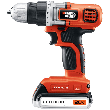Damp homes are often uncomfortable and pose serious health risks. Health risks associated with dampness include illnesses resulting from mold spores, mites and bacteria. Spores and mites may enter your home as a result of dampness. A damp atmosphere is the perfect home for bacteria, mites and spores because it fosters growth. Bacteria, spores and mites can all harm the respiratory system and potentially the nervous system. Respiratory problems are manifest by coughing, sneezing, wheezing and labored breathing. Research has recently indicated that mold can cause depression either because of chronic headaches or because of the type of atmosphere mold generally grows in. (If you suspect you have a mold problem or a potential mold problem due to a damp home, seek confirmation from an inspector or health specialist.)
Your geographical area may be a predictor and contributor to a damp home. If you live in a particularly humid or rainy area, your chances of having a damp home increase significantly. Check with your local news station or public library for information on the humidity and rainfall in your town.
Damp homes often have an influx of water from the outside because of a leak in the foundation of the home or because of a leak in a window or door. Two key indicators of where water is entering from the outside are water tides on paint or white salt deposits on brick.
There are three main tactics for preventing dampness in the home. The first thing you should do is find the source of your leak or influx of water. Once you have properly identified the source of your problem it is time to seal the deal. If a window is the culprit, you may need to apply additional rubber caulking to keep out moisture. If your problem lies in the foundation of your home, you may need to seek the help of a construction crew.
The next item of business is increasing or improving the insulation of your home. Increasing insulation will require the aid of properly trained individuals, so check out your yellow pages. The last major step in reducing dampness is increasing ventilation (air flow). During the day, you may create a cross breeze in your home by opening windows opposite each other in a room. Beyond these major, necessary steps you may also consider limiting boiling time of water (this releases water in the air), covering saucepans when cooking and discontinuing use of portable gas heaters.
If you spot mold or continue sensing a musty, damp feeling in your home seek professional help.

MAX Power! A powerful lithium-ion drill/driver that delivers 0-to-650 RPM and 115 inches-per-pound of torque in a lightweight, easy-to-use package. An anti-slip soft grip and LED worklight makes this tool a delight to use. Check out Black & Decker 20-Volt Cordless Drill/Driver today!
A home inspector is one of the best ways to find out what the general condition of your home is. The question is, do you ...
Discover MoreIf you live in a home or apartment that has brick walls, you know just how easy it is for them to get damaged in some ...
Discover MoreWhether you are building a new home, remodeling your old one, or getting a home inspection on a potential purchase, ...
Discover MoreThere are currently no comments for this tip. (Be the first to leave your comment—just use the simple form above!)
Copyright © 2026 Sharon Parq Associates, Inc.
Comments